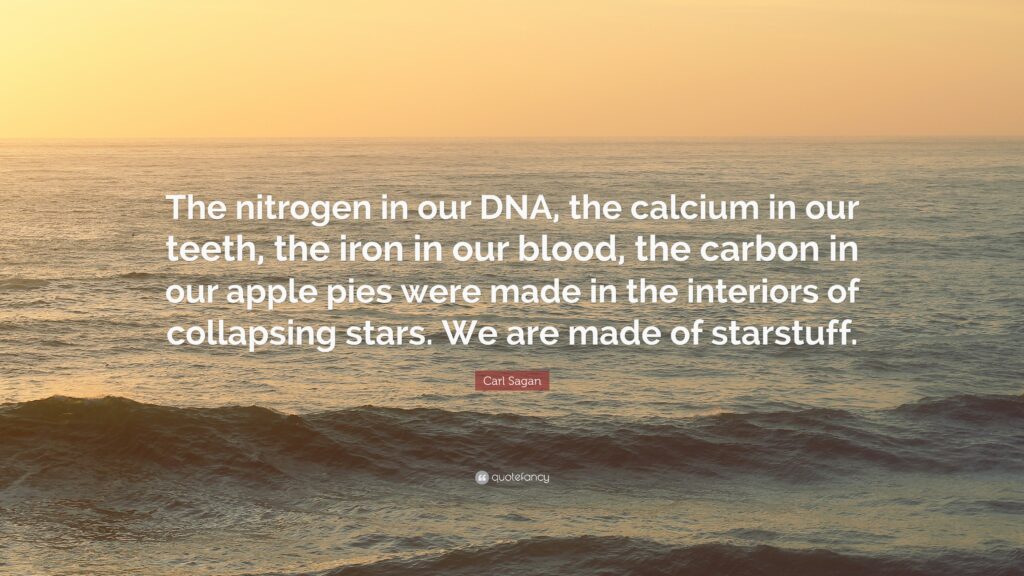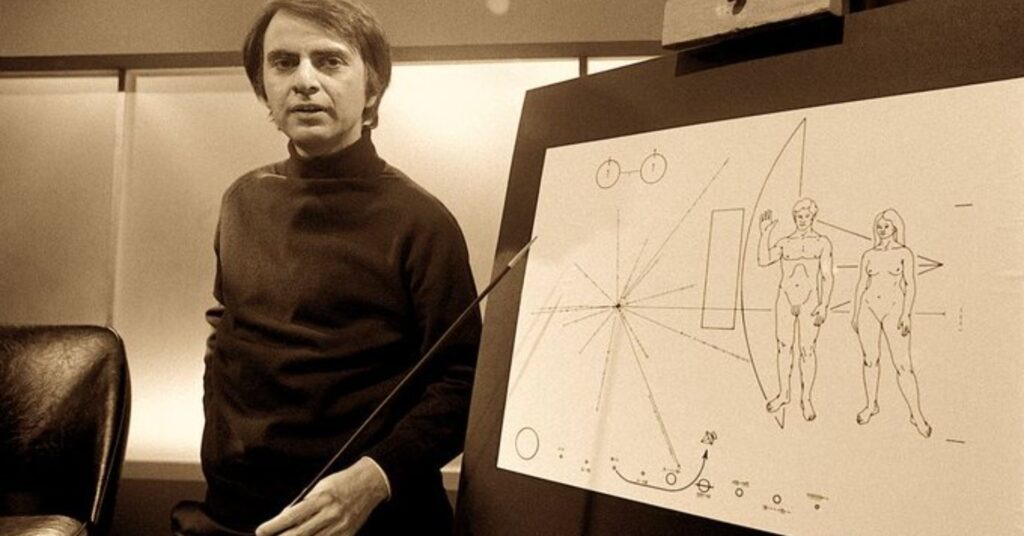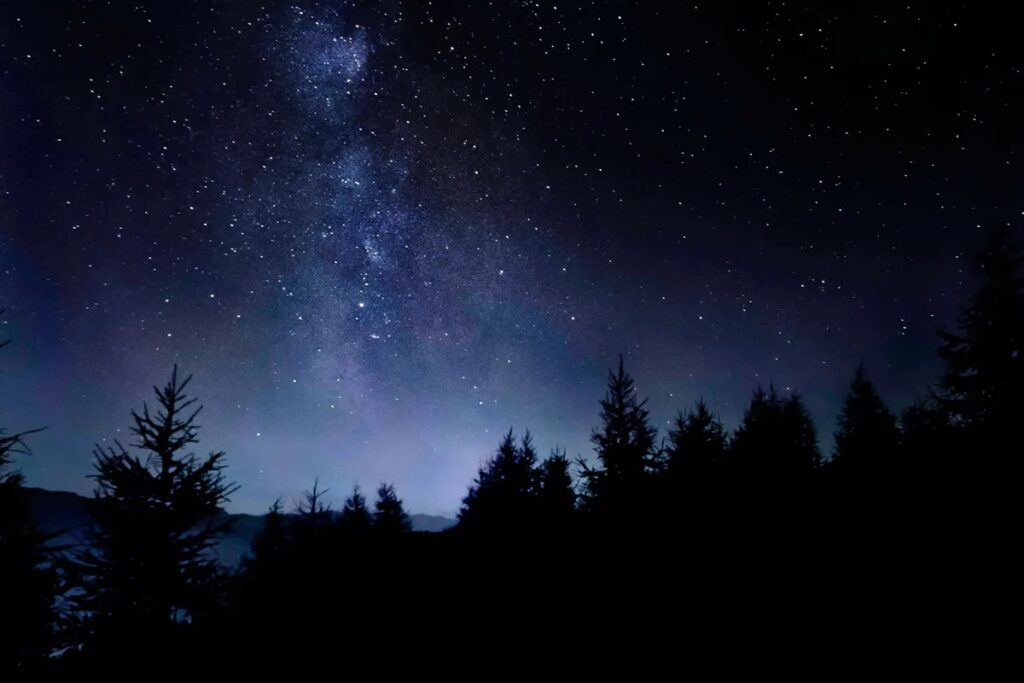
The phrase “We are made of star-stuff” is a resonant expression that connects humans to the cosmos, and it has a long history. The idea that the chemical elements of life were created in the furnaces of stars has been traced back to at least 1913, when a North Carolina newspaper article referred to the Sun and Earth as “made of star-stuff”. In 1918, the President of the Royal Astronomical Society of Canada delivered a speech in which he said, “our bodies are made of star-stuff,” suggesting a quasi-spiritual interpretation of this fact. In 1929, the astronomer Harlow Shapley, director of Harvard College Observatory, said, “We are made of the same stuff as the stars,” in an interview with the New York Times.

In 1971, the Nobel Laureate Doris Lessing touched on this theme in her novel “Briefing for a Descent into Hell”. However, it was Carl Sagan who is most often associated with the phrase, as he used it in his 1973 book “The Cosmic Connection: An Extraterrestrial Perspective”. Sagan pointed out that all the rocky and metallic material we stand on, the iron in our blood, the calcium in our teeth, and the carbon in our genes were produced billions of years ago in the interior of a red giant star. Thus, “We are made of star-stuff.”

The phrase has an enduring quality, likely because it speaks to a deep sense of wonder and interconnectedness that many people feel when contemplating the universe. In 1921, a newspaper advertisement for a new columnist proclaimed, “We’re All Made of Dust—But It’s Star Dust!” and in 1978, the book “The Seven Mysteries of Life” by Guy Murchie included an “ancient Serbian proverb” that said, “When you can really grasp the fact that we’re all just little stars twinkling in the vast night sky, the mystery of life will no longer be a mystery.”

Whether it is expressed in poetic or scientific language, the idea that humans are made of star-stuff continues to inspire awe and curiosity about our place in the cosmos.

Leave a Reply